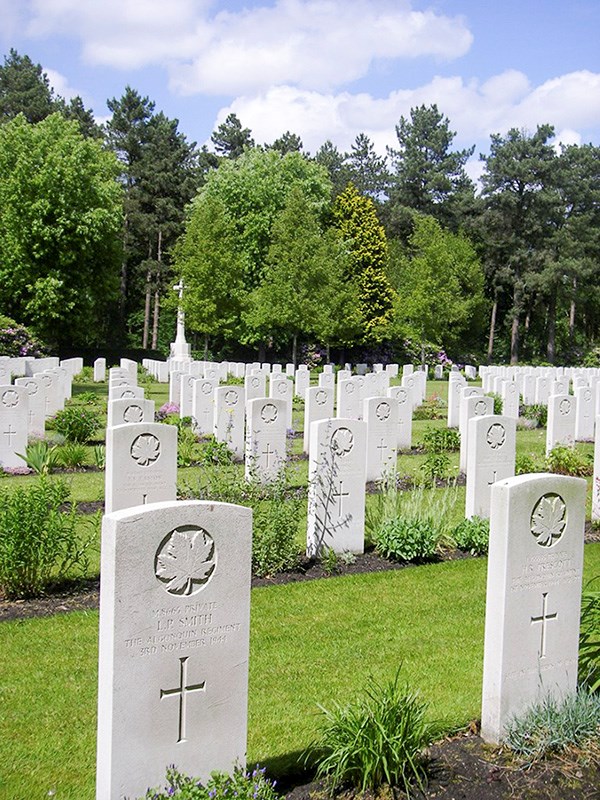Tom Slater and Tom St. Amand
In 1934, the Dionne quintuplets became internationally famous, a medical marvel and instant symbols of joy and of hope in the Great Depression.
Another set of five Dionnes also made news, but these ones from Sarnia and Point Edward weren’t as famous. All Raymond Dionne and four of his sons did was serve overseas in the Second World War.
Raymond Dionne Sr. was an anomaly, for he served in both the First and Second World Wars. Born in Camlachie in 1899, Ray moved to Sarnia and enlisted in 1916. He served as a machine gunner for a year until being wounded in France and returned home in 1918.
The following year his wife Golda and he were living on Victoria Avenue in Point Edward. Over the years the couple would be blessed with eight children, and to support them Ray worked first as auto mechanic and later as a coremaker at Holmes Foundry.
But the family patriarch was also a patriot.
At the age of 42, his brown hair flecked with grey, Ray enlisted in 1941, hoping to serve with young men half his age. After training in Petawawa he celebrated his 43rd birthday with the Royal Canadian Engineers in England.
Ray's physical condition, however, alarmed British physicians. The abdominal discomfort he'd felt in Canada struck harshly while overseas. He lost 35 pounds in a month and had no appetite or energy. The army made two decisions: to perform surgery and grant an honourable discharge.
Golda and her daughters were no doubt overjoyed when Ray returned home safely, but shocked by his appearance. Less than a year later, the Great War veteran was dead in Sarnia General Hospital, the cause listed officially as, “The result of gastric haemorrhage . . . death was related to military service.”
Golda received a War Service Gratuity of $146.58 for the loss of her husband.
The money may have helped but did little to ease her grief or lessen her worry. What goes through a mother's mind when she's lost her husband and four of her five sons are still at war?
Like his father, Raymond James Dionne left his job, his wife and his child to enlist with the Royal Canadian Engineers. He spent four years in North Africa and Sicily “chasing the Germans without rest.” In 1944, Raymond Jr. returned home, a job well done.
Melvin Dionne was a private in the Canadian Army and fought in Belgium. He was wounded in battle in 1944 but survived the war.
Ronald Dionne was also an army private, one of the first infantrymen to step ashore on Juno Beach on D-Day. Ron was wounded that day and again as the Allies marched to Berlin. By the time he recovered, the war was over.
Robert Dionne was a combat engineer (or sapper) whose job was to prepare the way for moving armies by building bridges, constructing defences and clearing minefields. In 1944, Robert Dionne was in Belgium, preparing the way for Allied troops to advance in the Battle of the Scheldt. The Allies needed the port of Antwerp as a supply depot, and to claim it they had to clear the waterway, the Scheldt Estuary, of German forces guarding it.
Robert was killed on Oct. 1. His mother, now living in Sarnia, received a letter a few weeks later that provided no details other than her son “was killed in action against the enemy.” Later, the Belgian government posthumously conferred the award of ‘Croix de Guerre 1940 avec Palme’ for his role in liberating Belgium.
Robert Dionne is buried in Bergen-Op-Zoom Canadian War Cemetery, Netherlands. He was twenty years old.
Raymond Sr., Raymond Jr., Melvin, Ron and Robert. A father and four sons answered the call of duty. They will never be as famous as the Dionne quints, but perhaps they should be.
The cost: two Dionne names inscribed on the cenotaph at Sarnia’s Veterans’ Park.
